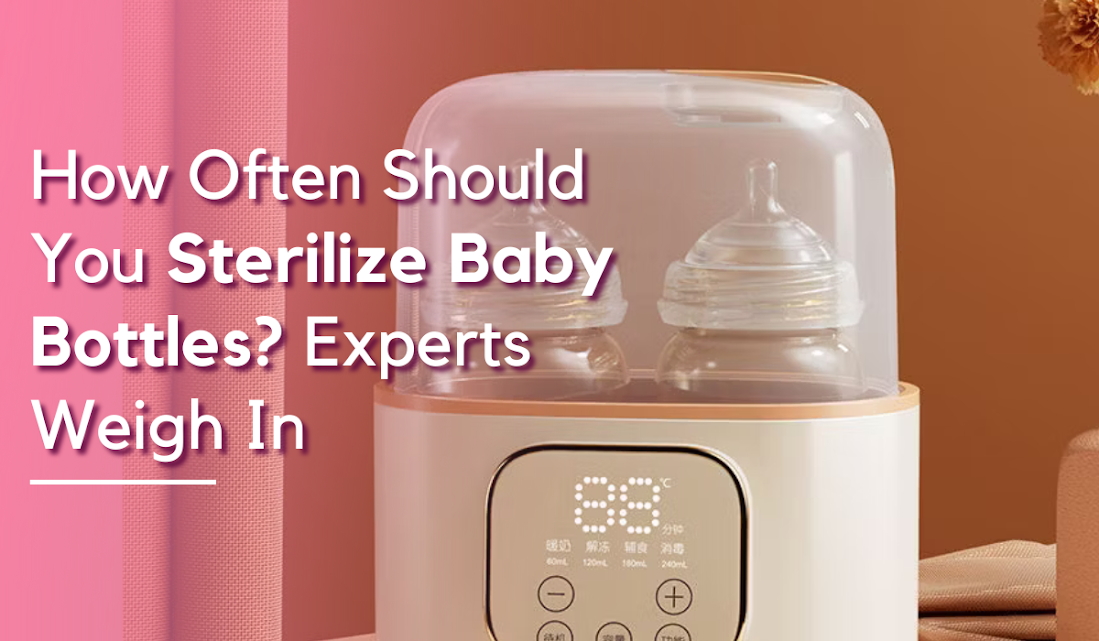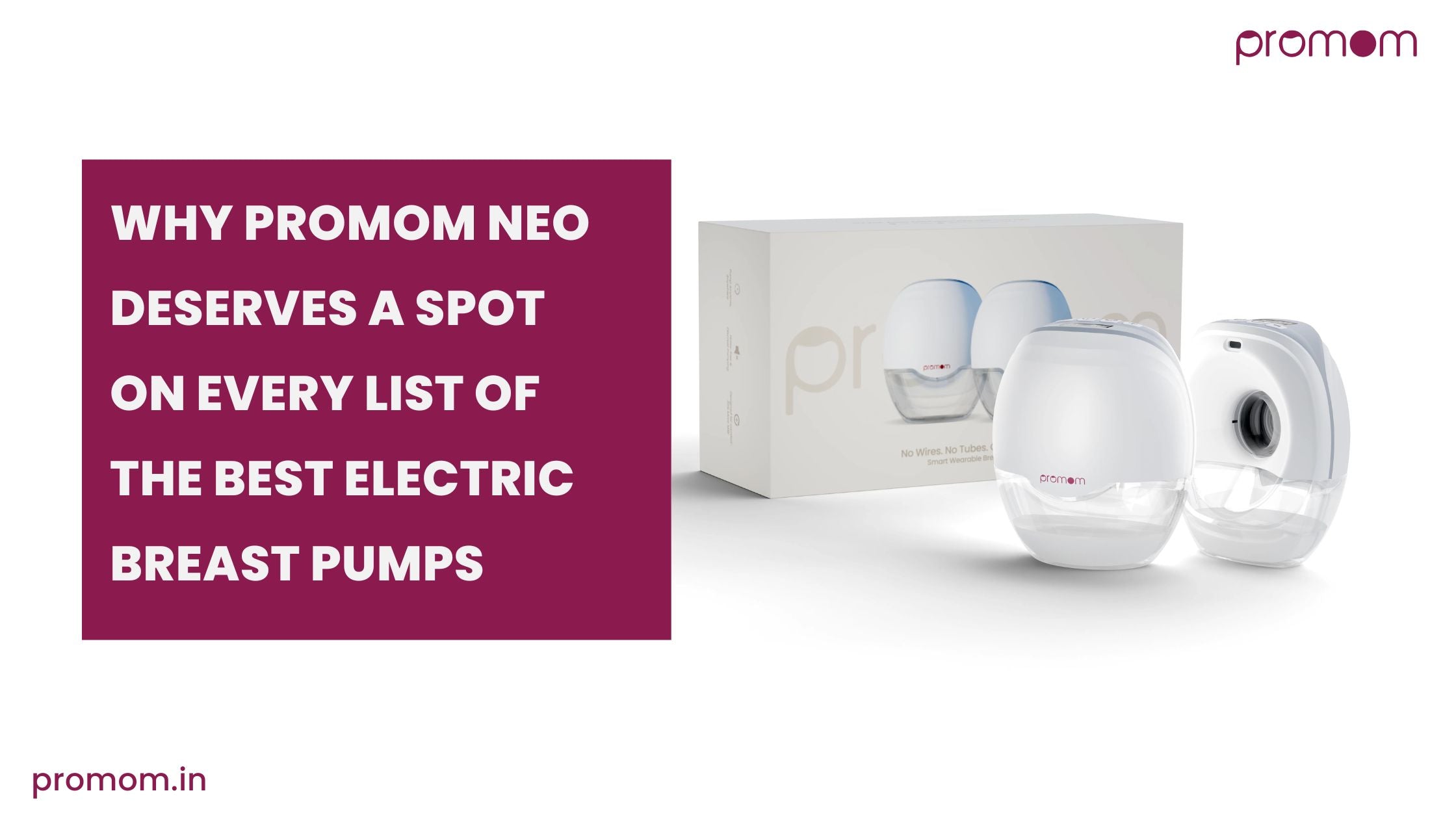
How Often Should You Sterilize Baby Bottles? Experts Weigh In
Your baby’s health depends on maintaining their bottles completely clean and free from germs. What is the needed frequency of baby bottle sterilization? Babies require bottle sterilization every time or washing will suffice.
This article examines expert insights while presenting detailed baby bottle sterilization guidelines that help maintain your baby's health and safety.
What Makes It Essential to Sterilize Baby Bottles?
Although sterilization of baby bottles destroys pathogens alongside bacteria and viruses, which find safety on bottle and nipple surfaces and pacifiers. The developmental state of newborn immune systems makes infants younger than three months more prone to infections. Early life requires sterilization to be a mandatory procedure.
Infants maintain a weak immune response for months beyond birth until they reach maturity. The practice of sterilization keeps an essential position in complete infant hygiene maintenance. Proper cleaning of feeding bottles prevents gastrointestinal problems such as colic and diarrhea and other bacterial infections in babies.
When Should You Perform Bottle Sterilization for Your Baby?
The necessity of baby bottle sterilization depends on your infant's general health, together with their age and their living conditions. Here’s what experts recommend:
For newborns (0-3 months)
Medical consensus shows that sterilization represents an essential practice for babies during their initial three-month period. A newborn child's delicate state requires regular bottle sterilization following each feed. Your baby requires sterilization for every feeding-related item they use, including bottles, nipples, and pacifiers, together with parts from your breast pump.
For Babies Older than Three Months
Bottle sterilization frequency can be reduced beyond three months but should continue as a regular practice for your baby. Parents who have weak immune systems or sick babies typically sterilize bottles daily or multiple times weekly.
In Case of Illness
It is best to increase bottle sterilization frequency when your baby becomes sick to stop bacterial and viral transmission. Babies with weakened immune systems because of illness or pre-existing medical conditions require special protection from germs.
How to Sterilize Baby Bottles?
Parents have multiple effective options to achieve bottle sterilization. The initial step of hand washing serves as a critical cleaning method, but sterilization takes it a level higher by destroying dangerous bacteria. The following paragraphs present multiple effective methods to sterilize baby bottles.
1. Boiling Water Method
Using boiling water constitutes an economical approach to sanitizing baby bottles. You should wait for water to boil intensely before placing bottles and nipples inside for five minutes of total immersion.
Who does not have access to a sterilizer machine for baby will find this sterilization method to be most suitable. To properly sterilize baby bottles through this method, you must both watch over the boiling water and ensure it reaches a full rolling boil before beginning, but it consumes minimal effort and cost.
2. Steam Sterilizer Machines
A sterilizer machine for baby stands as a valuable purchase since it combines convenience with efficiency for bottle sanitization. A steam-based sterilizer machine provides fast bottle sanitation by employing thermal steam to eliminate dangerous pathogens.
Sterilizer machines offer compact sizes with easy operation features that permit simultaneous cleaning of multiple bottles for busy parents. You just need to place the bottles inside the machine and then add water before turning it on. The entire sterilization process normally requires only several minutes to finish.
3. Microwave Sterilization
Microwave sterilizers function as a practical solution to sterilize infant bottles. The containers generate steam through microwave power, which performs the sterilizing process of baby bottles.
You just pour a small amount of water into the sterilizer machine for baby before placing it inside the microwave for automated sterilization. The bottles become sterilized within minutes because of this efficient technique.
4. Chemical Sterilizing Tablets
Travelers who need bottle sterilizing without power can use chemical tablets that dissolve in water. The soluble tablets function in water to sanitize bottles through a 30-minute process. This method serves emergencies or traveling abroad even though it has decreased in popularity among modern sterilization techniques.
Final Thoughts
Baby bottle sterilization stands as a vital practice for protecting your baby’s health, particularly within their first several months. Using a baby bottle sterilizing machine will reduce the effort required for sterilization while giving you confidence in its safety results. You can decrease the sterilization frequency after your baby develops but continue to practice effective cleaning methods.
Promom offers high-quality sterilizer machine for baby that provide hassle-free and efficient bottle sterilization to keep your baby's feeding essentials germ-free.
The best sterilizer solutions for your baby deserve your exploration. Visit Promom today!


